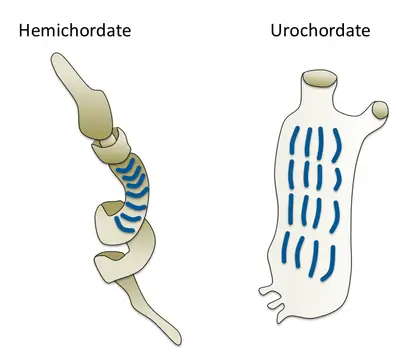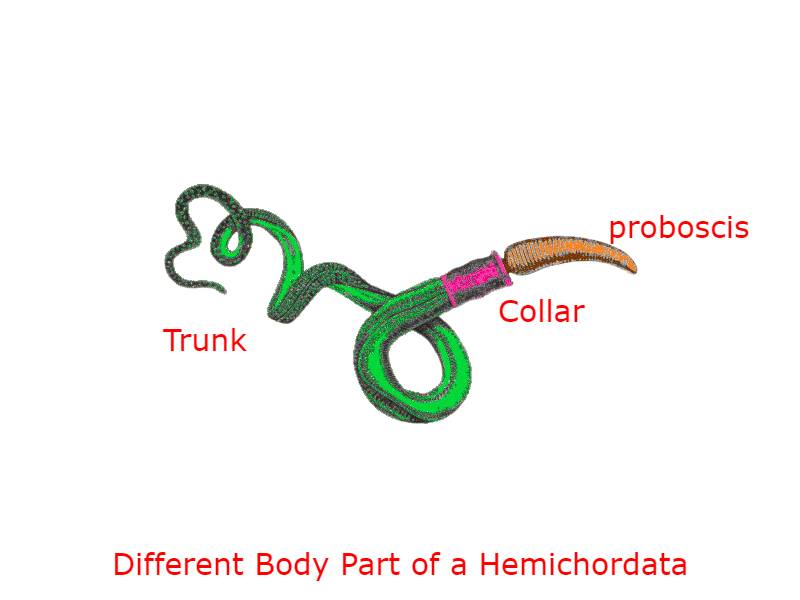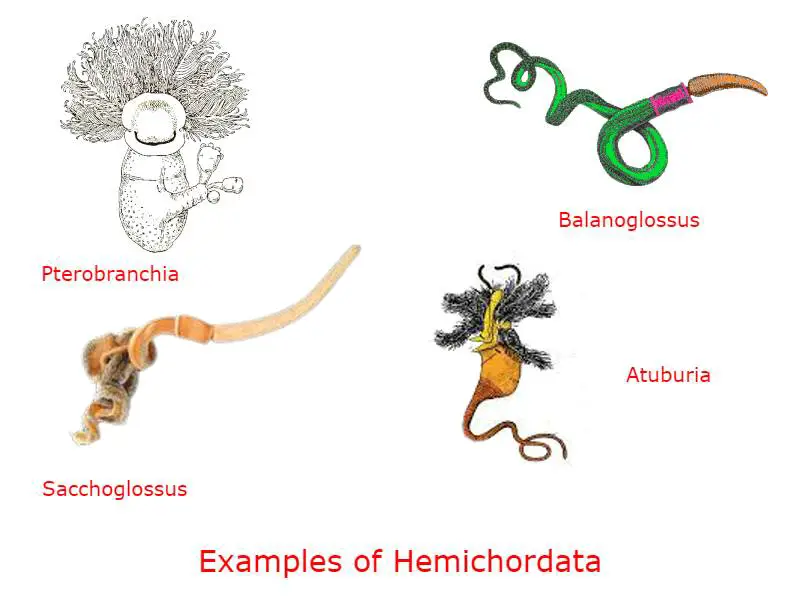We have discussed various aspects of Balanoglossus as an example of Hemichordata, now we are going to discuss more examples of Hemichordata.
Table of Contents
Rhabdopleura:
Rhabdopleura is marine Hemichordate under the class of Pterobranch, they live in the colonial form in gelatinous tubes and from coenobium. The zooids of their colony linked to each other through a horizontal tube and after a certain interval vertical gelatinous tube contain zooids. The whole colony is attached to any solid surface, the gelatinous tube is formed by the secretion of the zooids.
The zooids have a special feature, their collar has branched ciliated arms and they are generally found in large numbers in North Atlantic. Zooids are present at the distal part of the vertical tube of the gelatinous tube and each zooid is around 1 mm long. They have disc-shaped proboscis and their branched ciliated arms present on the collar help them to collect food.

The alimentary canal in Rhabdopleura is U-shaped, mouth, and anus open outside side by side, their disc-shaped proboscis does not have any proboscis gland. At the posterior end of each zooid, the trunk is attached to a muscular structure and all the zooids are connected to a common thread-like structure known as black stolon. Black stolon or pectocaulus are present inside the horizontal tube, the black stolon can withdraw the zooids inside the vertical tube of coenobium when there is any external enemy present outside.
In Rhabdopleurida males and females are present in the same colony, in Rhabdopleura gonad is single present on the right side of the trunk. Asexual reproduction also occurs in them by the process of budding from the black stolon.
Ptychodera:
Ptychodera is a genus under the subphylum Hemichordata, they have great resemblance with Balanoglossus in various aspects. But the proboscis and collar region is much smaller than Balanoglossus, the genital wings and sacculation in the trunk region also show great similarity with Balanoglossus.
Saccoglossus:
Saccoglossus are marine, soft-bodied, slender, tubiculous Hemichordata, they live in spirally twisted burrows. Like Balanoglossus their body is also divided into three parts, proboscis, collar, and trunk but in them, the proboscis is much longer than Balanoglossus.
The posterior part of the collar has an operculum-like structure that covers the first few pairs of gill pores. But in the trunk region of the Saccoglossus does not have genital wings and hepatic caeca.

In the middle part of the trunk, on the dorsal side lateral fold is present in which gonads are present, mature gonad is yellow in male and grey in female. They are present in all parts of the world and they are around 2 cm to 3 cm in length. Reproduction occurs through sexual mode and development is indirect, have free-swimming tornaria larval stage in their life cycle.
Cephalodiscus:
Cephalodiscus is a Hemichordata of class Pterobranchia, they present in abundance in the southern hemisphere. They live in colonial form, a large number of zooids live together in a gelatinous branched tube-like colony on the hard surface like on stones, corals at the deep ocean. The gelatinous matrix is known as coenobium which is the result of the secretion of the individual zooids.
They are 2 mm to 3 mm in length, body is divided into three parts, proboscis, collar, and trunk. The proboscis is Cephalodiscus is shield-shaped and cover the mouth, proboscis coelom open outside through two proboscis pores.
The collar has a large number of hollow tentacles-like structure that helps them in capturing food and the tip of each collar tentacle have a knob-like structure. The trunk has only one pair of gill slits, the alimentary canal is U-shaped. Mouth and anus open on ventral and dorsal side respectively, the mouth and anus do not open near a point in them.

Atubaria:
They are sedentary Pterobranch live in coenobium and have three body parts, proboscis, collar, and trunk. The collar has paired tentacles-like structures, they have only one pair of gill slits.
Reference Characteristics Features of Hemichordata
Detailed Information on
Hi Everyone!!! Welcome to Imaluop. Imaluop always try to learn some new and he want to share to other people. Here we will try to learn various topics on Science, specially on Biological Sciences.